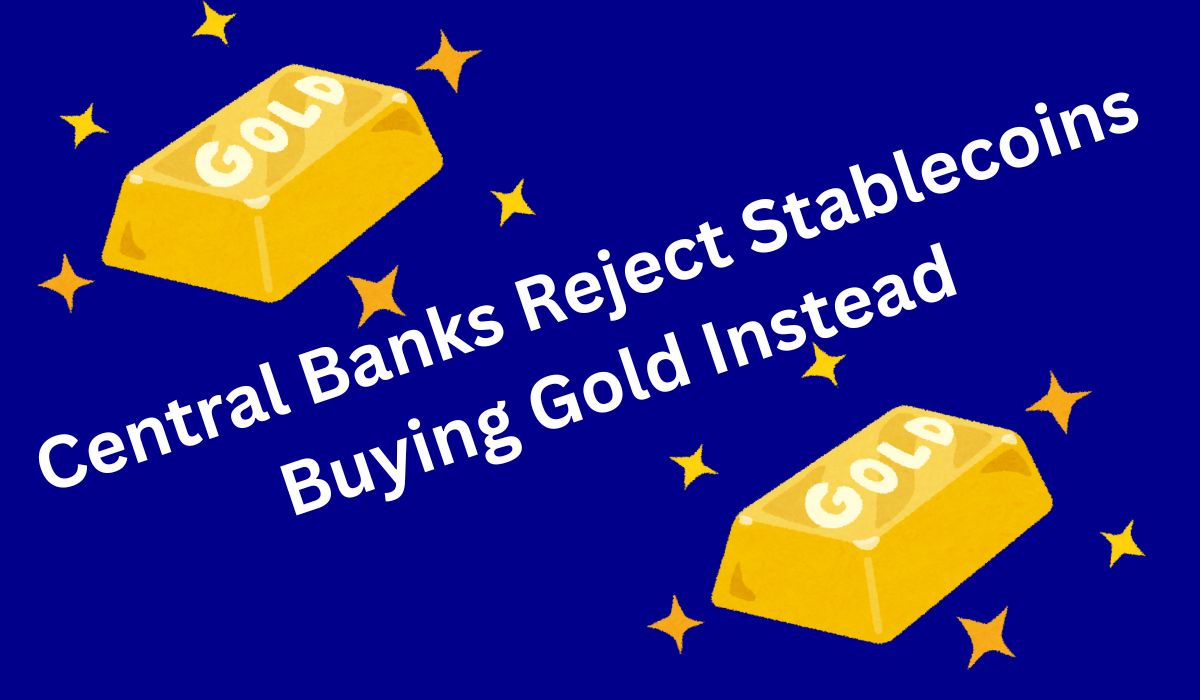Central banks worldwide are making a clear statement with their wallets, and it’s not the one crypto enthusiasts want to hear. While stablecoins have been positioned as the future of global finance, countries are instead loading up on gold at unprecedented rates. The pattern emerging from this behavior reveals a fundamental trust problem that threatens the entire stablecoin narrative.
The Gold Rush Nobody’s Talking About
What caught my attention in recent central bank activity is the sheer volume of gold purchases. Countries aren’t just diversifying—they’re making a deliberate choice to reject what’s being offered in favor of what’s been trusted for thousands of years. Gold has been the agreed-upon standard across civilizations for millennia, and when modern financial innovation fails to inspire confidence, nations revert to what works.
This isn’t happening in a vacuum. The gold-buying surge coincides directly with the rise of stablecoin adoption and promotion. That timing matters.
The Stablecoin Promise vs. The Audit Reality
Here’s what makes this particularly noteworthy: stablecoins are supposedly backed one-to-one by real US assets. In theory, every single stablecoin in circulation should have an actual dollar or Treasury bond equivalent sitting behind it. That’s the entire value proposition—digital dollars with the stability of traditional currency and the speed of blockchain technology.
The problem? There’s no way for a person or foreign government to audit that claim with 100% certainty.
Think about what that means from a sovereign nation’s perspective. You’re being asked to trust that private companies are maintaining proper reserves. You’re supposed to believe their attestations and periodic reports. But you cannot independently verify, with complete certainty, that the backing exists at the moment you need it most—during a crisis.
Why This Trust Gap Matters for Global Finance
Looking at this from a market perspective, the audit problem isn’t just theoretical. It’s the critical factor that determines whether stablecoins can actually replace traditional reserve currencies on a global scale.
Central banks operate in a world where trust is everything, but verification is paramount. When a country holds gold reserves, they can physically audit their vaults. They can test the metal. They can count the bars. The verification process is tangible and absolute.
With stablecoins, you’re trusting corporate attestations, third-party auditors, and blockchain transparency that shows tokens but not underlying assets. For a finance minister responsible for their nation’s reserves, that’s an unacceptable level of counterparty risk.
The Greed Standard vs. The Gold Standard
What becomes clear from the official communications and actions of central banks is that they view the current stablecoin structure as fundamentally different from historical reserve standards. The gold standard worked because gold is finite, physically verifiable, and has no counterparty risk. You either have the gold or you don’t.
Stablecoins, despite their name, introduce multiple layers of trust and counterparty risk:
- Trust that the issuer is solvent
- Trust that reserves are actually maintained one-to-one
- Trust that attestations are accurate and current
- Trust that regulatory oversight is sufficient
- Trust that in a crisis, redemption will actually occur
Each layer represents a potential failure point that doesn’t exist with physical gold reserves.
What the Data Suggests About Reserve Diversification
Examining the numbers reveals a striking pattern. While stablecoin market capitalization has grown significantly, central bank gold purchases have accelerated even faster. Countries aren’t splitting the difference or hedging between old and new—they’re choosing decisively.
This behavior signals something important: sophisticated financial actors with access to the best information and analysis are voting with their reserves. They’re saying that when it comes to storing national wealth, unverifiable digital claims don’t compete with verified physical assets.
The Critical Question for Stablecoin Adoption
The key insight here is that stablecoins face a fundamental credibility problem that technology alone cannot solve. Blockchain transparency shows you how many tokens exist and tracks their movement. But it cannot prove that equivalent real-world assets back those tokens.
That’s not a technical limitation—it’s a structural feature of how stablecoins operate. The backing exists off-chain, held by private entities, subject to traditional financial rules and risks. All the blockchain does is track the digital tokens themselves.
For retail users and traders, this might be acceptable risk. For central banks managing national reserves, it’s disqualifying.
What This Means for the Future of Digital Currencies
The pattern emerging from this data points to a more nuanced future than crypto advocates predicted. Stablecoins may indeed play a significant role in payments, remittances, and retail finance. But replacing traditional reserve currencies and challenging gold as a store of sovereign wealth? The evidence suggests countries aren’t buying that story.
What’s particularly significant is that this isn’t ideological resistance to cryptocurrency or blockchain technology. Central banks are actively exploring and piloting their own digital currencies. They’re not afraid of digital money—they’re specifically rejecting private stablecoins as reserve assets.
The difference is control and verification. A central bank digital currency offers the benefits of digital money with the verifiability and legal standing of sovereign currency. A private stablecoin offers convenience with unverifiable promises.
The Market Implication Moving Forward
Looking at these developments, the strategic question becomes: can stablecoins solve their audit problem? Some proposals exist—real-time proof of reserves, enhanced regulatory oversight, mandatory third-party custody arrangements. But each solution adds complexity, cost, and still doesn’t fully eliminate counterparty risk.
Meanwhile, gold just sits there, physically verifiable and bearing no counterparty risk whatsoever.
What to watch for next is whether stablecoin issuers can develop audit mechanisms robust enough to satisfy sovereign governments, or whether this fundamental trust gap permanently limits stablecoins to retail and commercial applications rather than reserve status.
The world’s central banks have already made their choice clear. They’re buying gold, not stablecoins. Until the audit problem gets solved, that trend shows no signs of reversing.
